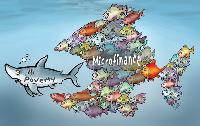
Microfinance institutions are financial institutions that provide loans and other financial services to poor sections of the society. Usually, they operate in rural areas and among low income urban people by extending small loans.
The RBI has extended its regulation and supervision to some of the MFIs that qualify certain criteria. Objective of the RBI is to make such MFIs health and stable. Such RBI regulated MFIs who takes a registration with RBI and fulfill the accompanied conditions are called NBFC-MFIs or Non-Banking Financial Company-Microfinance Institutions. Following are the conditions for NBFC – MFIs.
- An NBFC-MFI is a non-deposit taking NBFC, with Minimum Net Owned Funds of Rs.5 crore (for NBFC-MFIs registered in the North Eastern Region of the country, it will be Rs. 2 crore)
- Not less than 85% of its net assets as “qualifying assets”.
Qualifying assets for NBFC-MFIs
Qualifying assets are loans provided by the NBFCs that meets certain specifications. First is that the loan must be given without any collateral. Second, the NBFC-MFI can give loans to borrowers with a rural household annual income not exceeding Rs. 1, 00,000 or urban and semi-urban household income not exceeding Rs. 1,60,000. Third, the total indebtedness of the borrower does not exceed Rs.1, 00,000. Loan, if any availed towards meeting education and medical expenses shall be excluded while arriving at the total indebtedness of a borrower.
Minimum fifty percent of loan should be given for productive purposes
A part of the aggregate amount of loans may be extended for other purposes such as housing repairs, education, medical and other emergencies. However aggregate amount of loans given for income generation should constitute at least 50 per cent of the total loans of the NBFC-MFI.
There are certain disbursement and repayment norms as well related with the loans.
*********









